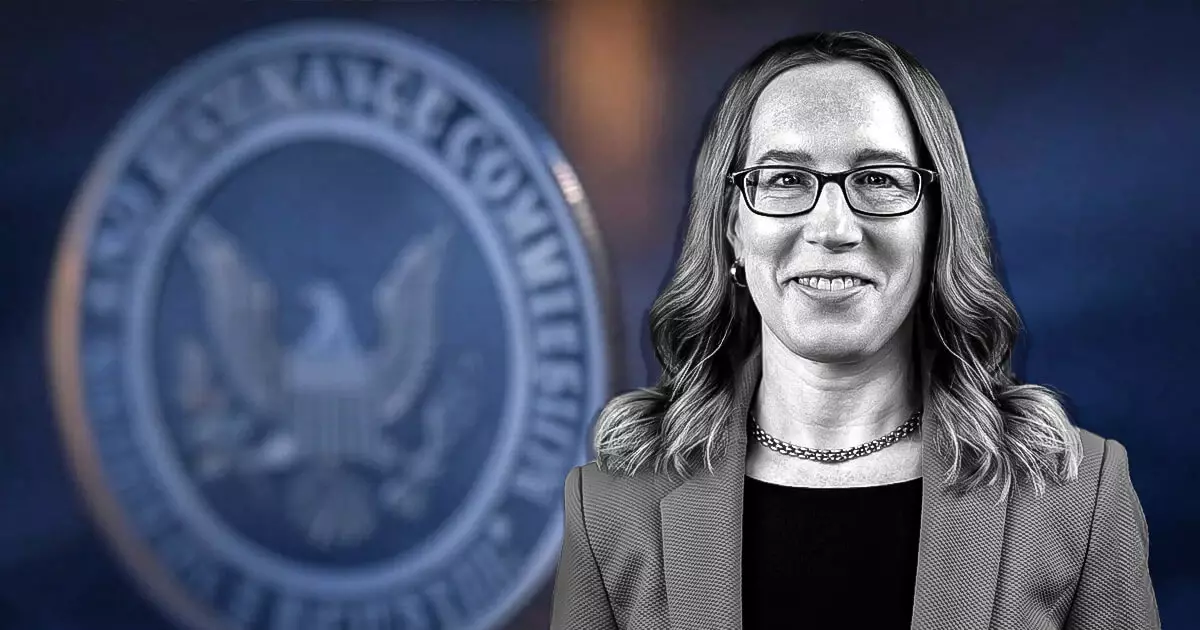In the rapidly evolving world of cryptocurrencies, regulatory bodies are grappling with an urgent need to categorize and control a technology that is fundamentally disruptive yet inherently complex. SEC Commissioner Hester Peirce’s recent remarks highlight a core dilemma: the blurry boundary between truly decentralized protocols and their more centralized counterparts, particularly within layer-2 solutions. Her stance seems balanced, advocating for a pragmatic approach that protects innovation without imposing overly burdensome regulations. However, beneath her nuanced rhetoric lies a series of underlying issues that could serve to snuff out the very spirit of decentralization that makes blockchain revolutionary.
Decentralized protocols are, by design, intended to operate without central authorities controlling or owning them—an idea that democratizes access and resists censorship. Peirce’s emphasis on the non-ownership of protocols underscores her belief that code is autonomous and should remain beyond regulatory reach. Yet, the real-world implementation of layer-2 solutions complicates this ideal. Increasingly, these solutions integrate centralized matching engines to address issues like Maximum Extractable Value (MEV), a move that fundamentally shifts control from distributed nodes to single entities or small consortia. This centralization raises vital questions about whether such chains should be regulated as securities exchanges or broker-dealers, placing a heavy regulatory burden on operators that could inadvertently hinder innovation.
This situation exposes a crucial flaw: the perception that technological decentralization alone is sufficient for regulatory exemption. In practice, the more layer-2 chains rely on centralized control mechanisms—whether for speed, efficiency, or cost reduction—the more they resemble traditional exchanges. This paradox threatens to coerce blockchain developers and entrepreneurs into a regulatory straitjacket, where the line between innovation and compliance becomes dangerously blurred.
The Double-Edged Sword of Centralized Matchmaking
An especially dangerous flaw lies in the way centralized matching engines within layer-2 solutions are perceived. These engines are responsible for transaction sequencing and are critical in counteracting front-running and sandwich attacks that plague on-chain trading. While these mechanisms undoubtedly improve retail trading experiences, they also concentrate control—something that regulatory frameworks traditionally associate with centralized intermediaries. Commissioner Peirce’s acknowledgment that such matchmakers could be viewed as securities exchanges is telling; it suggests that technological design choices—aimed at improving user experience—may inadvertently impose legal obligations typically reserved for traditional financial institutions.
This approach can stifle innovation by forcing developers to navigate a complex web of regulatory compliance, risking the death of truly decentralised protocols that do not primarily rely on centralized control mechanisms. Instead of fostering innovation, this risk creates a regulatory bottleneck, where only projects that mimic traditional trading infrastructures can thrive, fundamentally undermining the altruistic ethos of open-source, decentralized development.
Furthermore, the focus on managing MEV through centralized services introduces moral hazard. While these centralized services may offer short-term benefits such as reduced front-running, their control over transaction ordering could be weaponized or exploited, creating new vulnerabilities. Balancing the benefits of such solutions with the imperative to preserve decentralization remains a critical challenge—one that current regulation seems ill-equipped to handle without risking overreach.
Hesitating or Hindering? The Community’s Role and Regulatory Caution
Peirce’s cautious approach—favoring community-led solutions over immediate regulation—reflects a recognition of the potential damage that over-regulation could inflict on the burgeoning crypto ecosystem. However, this hesitance, while well-intentioned, reveals a deeper issue: the lack of a clear, consistent framework that can adapt to diverse implementations of blockchain technology.
The community’s organic development of solutions to MEV and scalability issues represents a vital innovation engine that could be stifled under heavy regulatory oversight. The danger lies in rushing to regulate complex code and decentralized protocols based solely on their appearance or perceived centralization. Such an approach risks making the regulatory environment so unpredictable that it discourages genuine innovation and incentivizes developers to move their projects to more lenient jurisdictions or underground ecosystems.
Peirce’s stance underscores an important truth: regulation should protect users and investors without unfairly punishing developers who rely on open, permissionless systems. Yet, the ambiguity surrounding the regulatory status of layer-2 chains with centralized components leaves developers in a limbo—uncertain whether they are building compliant systems or risking legal sanctions. This uncertainty could lead to a chilling effect, where developers prioritize compliance over innovation, thereby systematically hampering progress in the blockchain space.
The Future of Regulation: Balancing Control and Freedom
Ultimately, Peirce’s principles-based approach—differentiating autonomous code from entities performing regulated activities—aims to strike a balance that many central-right perspectives favor: encouraging technological advancement while safeguarding investors. Nonetheless, it is precisely this balance that remains elusive. If regulators continue to conflate control over transaction sequencing with traditional forms of centralization, they risk turning the entire crypto ecosystem into a heavily regulated, bureaucratic nightmare.
For the industry to survive and thrive, policymakers must recognize that decentralization is more than just a technological feature—it is a fundamental ideological stance that promotes economic freedom, innovation, and resilience. Overly broad or rigid regulation will not only stifle the inventive spirit but also threaten to consolidate power into the hands of a few large players who can navigate the regulatory labyrinth, leaving smaller developers and open protocols vulnerable.
Peirce’s cautious stance, while prudent, may be insufficient to prevent a creeping regulatory overreach. The challenge lies in crafting rules that are clear enough to uphold investor protection without extinguishing the decentralized renaissance. Otherwise, the industry risks becoming an Orwellian patchwork of compliance, where the true promise of blockchain—liberation from centralized control—becomes an unattainable fantasy.

